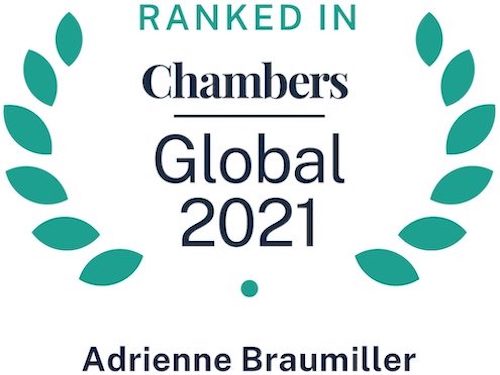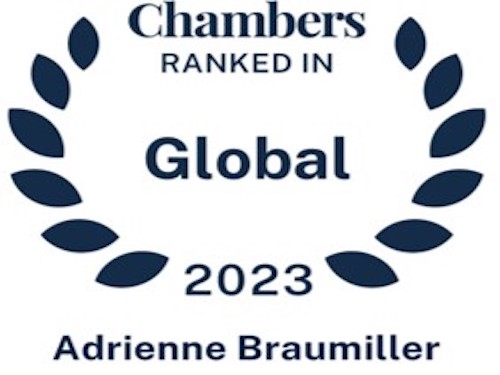America’s Misunderstood Trade Deficit
By Mike Smiszek , Senior Trade Advisor, Braumiller Consulting Group
Several fundamental conditions are widely presumed necessary for a country to enjoy the benefits of global trade. One condition is that import activity ought not exceed export activity.[1] Put more simply, we must sell more than we buy. On its face this seem reasonable. It seems logical that a trade deficit (that is, selling less than we buy) is a drain on our economy. Indeed, every month the news media feed us the bad news about the negative “balance of trade” data reported by the Commerce Department. For much of our history, the U.S. experienced annual trade surpluses. But this hasn’t been the case in recent decades, as the U.S. is now entering its sixth consecutive decade of annual trade deficits—meaning that every year since 1975, covering the span of nine republican and democratic presidencies, we’ve imported more than we’ve exported. According to trade data collected by the U.S. Census Bureau, our trade deficit in actual dollars has increased this century, although as a percentage of trade activity the deficit has remained fairly constant:[2]
| Year | Exports (billions) | Imports (billions) | Balance (billions) | % of balance compared against total exports and imports |
| 2000 | $782 | $1,218 | –$436 | 21.8% |
| 2010 | $1,278 | $1,914 | –$635 | 19.9% |
| 2020 | $1,430 | $2,331 | –$901 | 24.0% |
| 2024 | $2,065 | $3,267 | –$1,202 | 22.5% |
Cutting through these numbers, the take-away here is that more than a trillion dollars is, apparently, removed from the U.S. economy each year (without even considering the ever-more-important services delta). Add up fifty years’ worth of similar deficits and it’s a wonder we still have a roof over our collective heads—or is it? Does a trade deficit really hurt our economy?[3]
The reality is that our economy has generally thrived, despite the chronic trade deficits since 1975, expanding at an unprecedented pace (notwithstanding speedbumps like the banking and credit crisis of late 2008 and the recession that followed). How can we explain this paradox? Is the trade deficit a useful measurement in the twenty-first century? How has our per capita GDP continued to generally rise over the last half-century in the face of these trade deficits?[4]
Most economists now agree that a trade deficit is meaningless when used as the sole gauge of economic success or failure, but this isn’t a new conclusion. No less an authority than the father of free market economics, Adam Smith, said in An Inquiry into the Nature and Causes of the Wealth of Nations that “nothing can be more absurd than this whole doctrine of the balance of trade.” This was echoed in an 1824 speech by Daniel Webster in which he said that “the excess of imports over exports, in truth, usually shows the gains, not the losses, of trade”.[5] The French free trade economist Frederic Bastiat used hyperbole to make a point in 1845: “Suppose, if that amuses you, that the foreigner inundates us with all sorts of useful commodities without asking anything in return, that our imports are infinite and exports nil, I defy you to prove to me that we should be poorer on that account.”[6] And in 1914, the lawyer and teacher Lee Francis Lybarger wrote in defense of imports:[7]
It is not what the laborer gives out in toil—his exports, but what he gets back in return for his labor—his imports, that determines his wages. And the greater his volume of imports the greater his wages. When a man starts out to make a purchase, it is not what he pays out—his exports, but what he gets back that determines the profits of the exchange. If he gets nothing back, then his exporting is a total loss. And so everywhere and in everything, it is by importing and not by exporting that a people are enriched.
The notion that a trade deficit is an inherently unhealthy condition can trace its roots back to the pre-Industrial Revolution days of mercantilism when stockpiles of wealth in the form of gold, silver, and other precious metals were the yardstick by which a nation’s power and influence was measured.[8] To accumulate vaultfuls of shiny metals, a country necessarily sold (exported) more than it bought (imported), so a trade deficit was viewed negatively as a drain on wealth. The economic historian Percy Bidwell wrote a few weeks after WWII ended that the preoccupation with exports is a “relic … of mercantilism which still beclouds … and distorts” policy-making.[9] Back then, the calculus for gauging success or failure was relatively simple. But in our modern post-shiny-metal economy, the trade deficit is only one element of an increasingly complex global economic equation.[10] Bidwell noted that “a Great Power [like the United States] must have imports to survive, but they can get imports only by exporting[.]”[11] He argued that “getting goods cheaper than we ourselves can produce them” is the essence of the benefits we get from imports.[12]
Nobel laureate economist Milton Friedman, and his wife, Rose Director, who was also a distinguished economist in her own right, refuted the idea that exports are preferable to imports. In their socio-economic classic, Free to Choose,[13] the Friedmans discussed the circular and symbiotic nature of trade, explaining that “our gain from foreign trade is what we import. Exports are the price we pay to get imports.”
A 1988 Federal Reserve report noted “there is nothing inherently undesirable about a trade deficit or desirable about a surplus” because “for example, faster economic growth in the United States than in the rest of the world would tend to cause a trade deficit.”[14] Many other debunkings of the trade deficit myth have been published in recent years, few perhaps as cogent and frequent as those by Daniel Griswold, who explained in a 1998 Cato Institute policy paper that “the most important economic truth to grasp about the U.S. trade deficit is that it has virtually nothing to do with trade policy.”[15] Griswold argued in America’s Maligned and Misunderstood Trade Deficit (and on many subsequent occasions) that a trade balance must be understood in the context of a two-way flow of savings and investment, not simply as the difference between the volume of tangible exports and imports. Griswold wrote in 2016:[16]
Politicians and commentators love to focus on the deficit, as though it were a scorecard of who is winning in global trade, but the real measure is the total volume of trade. As economies expand, so does trade, both imports and exports. Exports help us reach new markets and expand economies of scale, while imports bless consumers with lower prices and more choices, while stoking competition, innovation, and efficiency gains among producers.
Also in 2016, Kevin Williamson’s conclusion in National Review was more blunt: “We get more stuff in return for the stuff we sell, and we get cheap investment capital on top of that.”[17] And a 2013 Federal Reserve report by Kevin Kliesen and John Tatom supported the counterintuitive hypothesis that imports are more important to the growth of American industries than exports.[18] Kliesen and Tatom’s research discovered that “the importance of imports to domestic manufacturing performance cannot be overstated” because, even more than exports, “intermediate goods imports and capital goods imports are the lifeblood of U.S. output.”[19] They found that while export activity had no measurable effect on American manufacturing growth, the influx of intermediate foreign goods through increased imports exerted a “strong positive influence” on domestic industrial growth. Their findings suggest that our negative trade balance is a sheep in wolf’s clothing—and yet it is a dangerous sheep because it perpetuates a fallacy of systemic economic weakness.
The scope of job-enabling imports is even larger than just intermediate manufacturing inputs. Most imported goods that we call “consumer goods” like furniture or spaghetti or bicycles or toilet paper don’t go directly to the consumer. But whether these imported goods are intermediate goods or finished goods, they support many service industries that include distributors, logistics and transportation firms, wholesalers, or retailers before ultimately ending up in American homes. This intermediate supply chain is a vital sector of our service economy, creating jobs (and wealth) that are no less important than manufacturing jobs, yet this is rarely mentioned in any public debate as a factor that mitigates the so-called trade deficit.
The fundamental problem with the trade deficit in terms of public perception is not the numbers assigned to it—it is simply what we call it. Deficit is an inherently negative word, leading the average American to assume that a trade deficit is bad. And by that same logic that a trade surplus is good. These assumptions are reinforced by our personal experience, in which we strive to keep a surplus in our family’s bank account. Carl and Clara Consumer blindly accept—in fact, they’ve been conditioned to accept—that there must be something wrong with our economy if the numbers show a large trade deficit. And these deep-rooted generalizations about our trade deficits can be effectively politicized, whether by the right or the left. What chance does an average citizen have of understanding the trade balance when the government and our politicians exploit the common notions of surplus and deficit already imprinted on our brains from personal experience? So it’s not surprising that we adopt the same connotations when these words are used in the context of global trade.[20]
A longer, but still superficial, look at the empirical evidence exposes a glaring weakness in the argument that a trade deficit is fundamentally harmful. We find, for example, that during the Great Depression of the 1930s, unquestionably the darkest economic period in modern history, the U.S. experienced consecutive years of trade surplus.[21] Thus the economic failures of those years or any other historical period, today included, cannot be directly attributed to, nor inferred from, the trade balance (i.e., exports minus imports), but rather to a more intricate interaction of factors such as trade segmentation (what is the relative mix of imported and exported products and services), investment allocation, cross-border capital flows, and monetary policies that effectively inhibited economic growth.
An economic concept is better understood when it’s personalized, so think of your personal economy as simply a smaller version of a country’s economy. If you have a valuable skill—let’s say it’s expertise in global trade compliance—then you have a comparative advantage over those people who don’t have the same expertise. By the same token, you have a comparative disadvantage in practically every other vocation—in other words you have a relative skill deficit when it comes to dentistry, auto repair, farming, furniture-making, or countless other occupations necessary to your family’s comfort and survival. So you sell your comparative advantage in trade compliance to an employer in exchange for a salary that allows you to purchase all of the goods and services, whether they’re necessities or luxuries, that you and your family consume.[22] You have essentially exported your expertise, which consequently supplies you with the money used to import into your household the goods and services created by the exported expertise of others. The value created by your work effort is your export, and your consumption is your import. Importantly for you and your family, your employment is not an end unto itself (although it is for the consumer of your labor: your employer)—no, you don’t work (export) for the sake of working but rather for the sake of what your work gives you in return, which is the money to buy goods and services (your imports). Thus your imports are your end, and your salary is the means to that end. To paraphrase an old adage, you don’t live to work (i.e., to produce). Instead, you (as with nearly everyone else in the world) work to live (i.e., to consume). And guess what working to live generates? It generates a personal trade deficit; you trade your valuable time and expertise for goods and services to which you assign, by definition, a greater value. No matter what the price of milk is on any given day, when you buy a gallon of milk you have assigned a value to the milk that is greater, in terms of its utility to your family, than the money you are willing to pay for it. Your work today allows you to be wealthier tomorrow in the goods and services you bring into your life (as well as the savings you set aside, whether under your mattress or in a 401-K). You want a personal trade deficit, where your goods and services imported into your home are worth more than your exported labor. You want a personal trade deficit even if your salary is doubled, so that you can trade-in your Toyota for a Lexus, or send your kids to a private school, or take your spouse on a vacation to Australia instead of Arkansas (no offense intended to Arkansans!). The same is true at the national level. James Mill wrote that:[23]
The benefit which is derived from exchanging one commodity for another, arises, in all cases, from the commodity received, not from the commodity given. When one country exchanges—in other words, when one country traffics with another—the whole of its advantage consists in the commodity imported. It benefits by the importation, and by nothing else.
Mill recognized two hundred years ago that a country’s goal ought not be to produce simply for production’s sake—its collective goal, just like one’s personal goal, is to produce as a means to consume. Production exists only to serve the demand for consumption. Imports that satisfy the needs of consumers, whether as consumer-ready products or intermediate manufacturing inputs, would not occur if consumers did not have the wherewithal to purchase. Greater consumption, whether compared at the personal or national level, is a reflection of greater relative wealth.
The most generous assessment about the relevance of trade balance data (deficit versus surplus) is that it is an indicator of economic activity, not economic health. Nor should a trade deficit be confused in any way with indebtedness, but it’s a common mistake for the public to equate deficit with debt. The truth is actually the opposite; as we’ve discussed, a trade deficit generally signifies a greater standard of living. A thorough analysis of the trade balance asks questions about a broad range of factors that make up our trading activities: how many raw materials, intermediate products, or finished goods are being imported and exported? How much domestic manufacturing activity relies on imports? How much American intellectual property and components are in a “foreign” product (think iPhone)? What services are bought and sold transnationally? What is the price of the U.S. dollar?—fewer trade restrictions encourage more trade, which leads to more dollars in the hands of buyers, which makes the dollar cheaper, which encourages even more trade and foreign investment to flow into the United States. And, of course, what traditional trade barriers are in place, like quotas and tariffs (tariffs?—did somebody mention tariffs?)? These are just a few of the many factors that affect our understanding of trade statistics. It seems clear that basing a diagnosis of America’s broad economic health on a single macro data point like the trade deficit, in isolation from other mitigating or aggravating factors, is like a doctor assessing a patient’s overall health after examining only an elbow.
[1] This viewpoint is not a contemporary creation. See, for example, Henry George, Protection or Free Trade: An examination of the tariff question, with especial regard to the interests of labor (New York: Robert Schalkenbach Foundation, 1949), 103; first published in 1886.
The aim of protection is to diminish imports, never to diminish exports. On the contrary, the protectionist habit is to regard exports with favor, and to consider the country which exports most and imports least as doing the most profitable trade. When exports exceed imports there is said to be a favorable balance of trade. When imports exceed exports there is said to be an unfavorable balance of trade. In accordance with his idea all protectionist countries afford every facility for sending things away and fine men for bringing things in.
[2] See http://www.census.gov/foreign-trade/balance/c0004.html.
[3] Although many factors contributed to the global recession that began in 2008, this discussion will remain focused on trade in goods. The consequences of poor fiscal policy, ill-conceived legislation, rampant spending and a ballooning debt cannot be blamed on the global trade mix.
[4] Our Gross Domestic Product (GDP) is represented by C+I+G+(X-M), where C is our total consumption, I is our total investment, G is total government spending, X is the value of our exports, and M is the value of our imports.
[5] Daniel Webster, Speech of Mr. Webster upon the Tariff; delivered in the House of Representatives of the United States, April, 1824 (Washington, DC: Gales & Seaton, 1824), 21. Webster, who was an Ivy League-educated lawyer but not an economist, served in both the House and the Senate, and on two occasions as Secretary of State.
[6] Frederic Bastiat (translation by Patrick James Stirling), Fallacies of Protection (New York: G.P. Putnam’s Sons, 1909), 59.
[7] Lee Francis Lybarger, The Tariff: What It Is. How It Works. Whom It Benefits (The Platform, The Lyceum and Chautauqua Magazine, Chicago, 1914), 134.
[8] Mercantilism was the dominant social and economic model that guided how the monarchies of western Europe engaged in international trade during the sixteenth, seventeenth and eighteen centuries. The objective of mercantilism was simple: absolute governmental control over all aspects of trade—by political design rather than by the spontaneity of innovation and consumer demand—leading to the enrichment of the state rather than the individual. Under mercantilism, exports equaled success and imports were seen as a drain on wealth. Mercantilism required the expansion of domestic manufacturing activities and state control over all resources, not for the benefit of domestic consumers but rather because the goods produced could then be sold externally, bringing new wealth into a kingdom’s treasury. Producers and consumers were mere pawns in the King’s pursuit of gold and silver. Colonial expansion also was a means to achieve this end, providing new sources of raw materials and labor. Protectionism was a guiding principle of mercantilism, with high tariffs assessed on goods that subtracted from the sovereign treasury (like imports of consumer-ready luxury items or manufactured goods) but moderate tariffs (if any) on the raw materials necessary for domestic manufacturing of exportable goods. Modern versions of mercantilist philosophy unfortunately persist.
[9] Percy W. Bidwell, Imports in the American Economy, Foreign Affairs (Vol. 24, No. 1, October 1945), 85–86.
[10] Until 1933, when President Roosevelt signed an executive order that prohibited the hoarding of gold coins, a citizen could demand conversion of his paper money into an equivalent amount of gold. The U.S. money supply was officially tied to the price of gold—a practice known as the “gold standard”—until as recently as the early 1970s.
[11] Supra note 9, at 85.
[12] Supra note 9, at 86. See also: Robert Lincoln O’Brien, A Reasonable Foreign Trade Policy, World Affairs (Vol. 99, No. 3, September 1936), 150: “if we stopped buying from other countries, we must in the long run stop selling.”
[13] Milton Friedman and Rose Friedman, Free to Choose: A Personal Statement (New York: Harcourt, Inc., 1990), 41. See also F.W. Taussig, The Tariff Bill and Our Friends Abroad, Foreign Affairs (Vol. 8, No. 1, October 1929), 1: “…[I]mports are paid for in the end by exports, and … exchange between nations, like that between different regions within a country, is advantageous to both sides.”
[14] Cletus C. Coughlin, K. Alec Chrystal and Geoffrey E. Wood, Protectionist Trade Policies: A Survey of Theory, Evidence and Rationale, Federal Reserve Bank of St. Louis, January|February 1988, 10.
[15] Daniel T. Griswold, America’s Maligned and Misunderstood Trade Deficit: Trade Policy Analysis No. 2 (Washington, DC: Cato Institute Center for Trade Policy Studies, 1998). Readers are encouraged to visit www.cato.org for more of this and other excellent works by Griswold and his former Cato colleagues.
[16] Daniel Griswold, Rising Exports — and Imports — Are Good News for U.S. Economy (Mad About Trade Blog, June 23, 2016).
[17] Kevin D. Williamson, We Do Not Have a Trade Deficit, National Review (December 7, 2016).
[18] Kevin L. Kliesen and John A. Tatom, U.S. Manufacturing and the Importance of International Trade: It’s Not What You Think, Federal Reserve Bank of St. Louis Review, January|February 2013, Vol. 95, No. 1, 28. A slightly different take was published twenty-five years earlier in the Coughlin, Chrystal and Wood report: “Imports do not cause higher unemployment [yet] a reduction in imports via trade restrictions does not cause greater employment.” Supra, Note 14, at 7. See also: Pierre Lemieux, Are Imports a Drag on the Economy?, Regulation (Cato Institute, Fall 2015, Vol. 38, No. 3), 6–8.
[19] Supra Kliesen note 18, at 47.
[20] Another deficit—the deficit of useful knowledge—was the theme of an 1881 speech on bridge engineering before the Royal Scottish Society of Arts that included this marvelously pithy sentence: “Hence, the grossness of our ignorance of common things.” Edward Sang, On a Common But Vital Error in the Construction of Skewed Arches, The Building News and Engineering Journal, Vol. XL, Jan.–June 1881 (London: E.J. Kibblewhite, 1881), 229.
[21] Brian Reinbold and Yi Wen, Historical U.S. Trade Deficits, Federal Reserve Bank of St. Louis (May 17, 2019). This data shows that the U.S. had annual trade surpluses every year from 1870 until the mid-1970s.
[22] It cannot be said any better than by Sheldon Richman, who noted in an AIER Research Brief that in “any exchange, each party in effect says, ‘I’ll spare you the effort of making this if you spare me the effort of making that.’” All Economies are Service Economies, American Institute for Economic Research (November 22, 2017).
[23] James Mill, as reprinted in: William Bell Robertson, Political Economy: Expositions of its Fundamental Doctrines, Selected from the Best Writers, with an Introduction (London: The Walter Scott Publishing Co., Ltd., 1905), 171–172.

























